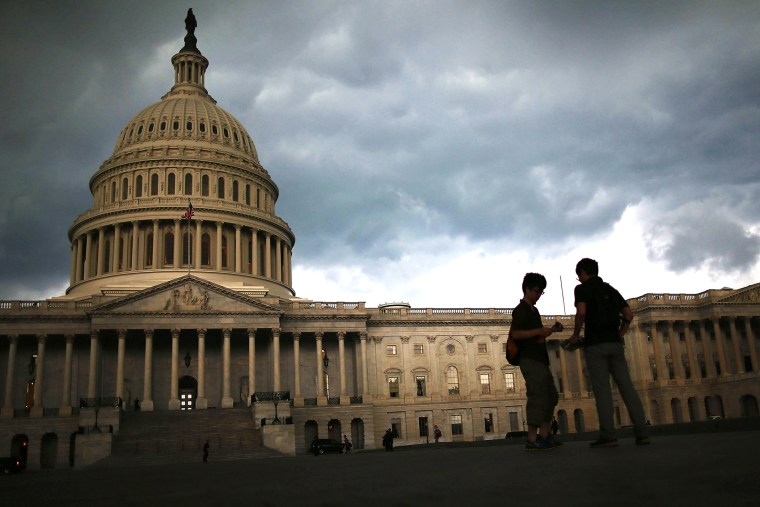Treasury Secretary Steve Mnuchin told Congress that it must raise the debt ceiling by Sept. 29 -- just three weeks away -- to prevent the nation from defaulting on its debts and crashing the economy. That deadline has since been moved up "a couple of days," leaving lawmakers with even less time to do what needs to be done.
And for a while, that looked like it might be a real problem. As recently as two weeks ago, Politico published a piece saying Republicans "are in a really, really bad spot" when it comes to raising the nation's debt limit, adding that GOP leaders "have no plan, nothing on the horizon, and very little time to get this done."
Hurricane Harvey appears to have changed the political landscape, at least a little. The Washington Post reported overnight:
Senate leaders are prepared to vote this week on legislation that would pair an increase in the federal government's borrowing limit with $7.9 billion in disaster relief for victims of Hurricane Harvey despite opposition from conservatives.The decision to combine the two unrelated measures is a potentially risky strategy that could further alienate conservatives who have insisted that any debt-limit increase be paired with corresponding spending cuts.
Before the deadly storm, congressional leaders were working on a plan to pass a clean debt-ceiling bill with considerable Democratic support. In recent days, however, officials decided it'd just be easier to attach a debt-ceiling increase to a disaster relief bill -- which members of both parties will, by and large, be inclined to support.
For now, the plan is as follows: the House will pass a Harvey-related spending package today, sending the bill to the Senate, which will add a debt-ceiling increase to the legislation, before sending it back to the lower chamber. According to the Post's reporting, House Majority Leader Kevin McCarthy (R-Calif.) said last night his chamber would likely pass that bill and send to the White House for the president's signature.
There's no guarantee this will work -- quite a few far-right members in both chambers, including the House Freedom Caucus, have said publicly they don't want the two priorities tied together -- but it probably offers the most straightforward path to success, and when it comes to the debt ceiling, the GOP doesn't appear to have a back-up plan.
But even if the plan works, it'd only be the first rung on a tall September ladder.
You've probably seen reports about how brutal this month is likely to be on Capitol Hill, and those pieces aren't exaggerated. Before the end of the month, Congress will have to pass a spending bill to keep the government's lights on, raise the debt ceiling, reauthorize the Children's Health Insurance Program (CHIP), reauthorize the National Flood Insurance Program (NFIP), reauthorize the Federal Aviation Administration (FAA), and approve at least one disaster-relief package.
Republicans also intend to work on the National Defense Authorization Act, tax reform, and as of yesterday, immigration policy. Donald Trump even wants Congress to take another crack at health care reform before its Sept. 30 deadline. We may also hear some discussion about infrastructure at some point.
And this is just the stuff we know about. Surprises often pop up along the way.
Did I mention that the Senate only has 16 days of legislative work remaining on this month's schedule?
